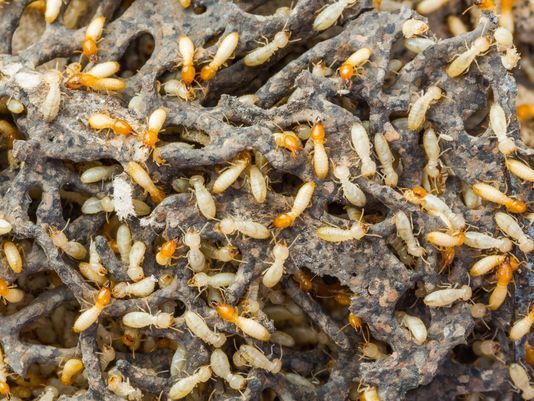By feeding on decaying scraps of wood and other forms of dead plant matter in the natural environment, subterranean termites recycle plant waste and enrich soil. This makes subterranean termites ecologically important insects, but unfortunately, several species are also well known for infesting structural wood. Reticulitermes flavipes, more commonly known as the “eastern subterranean termite,” is the most economically significant termite species in the United States, and it’s the only termite pest species that infests homes and buildings in the Boston area.
A mature subterranean termite colony can contain anywhere from 50,000 to more than two million individual termites. Researchers have found single eastern subterranean termite colonies that consist of numerous interconnected nesting sites that span an area as large as a football field. These massive colonies are commonly found beneath homes and buildings in urban and suburban areas, and Boston is located in a region where eastern subterranean termite activity is considered “moderate to heavy.” In addition to being exceptionally destructive insect pests, subterranean termites are very difficult to detect within infested structures due to their well hidden presence within structural wood.
Colonies consist of three primary castes known as workers, soldiers and the royal pair (queen and king). Only workers infest structural wood, and the rest of the colony remains below the ground. The only termites within a colony that homeowners may see on occasion are the reproductive “alates” that emerge from mature colonies as early as March or as late as June. Reproductive swarmers of many ant species, which are also known as alates, emerge during the same time of year in Boston. Termite and ant alates are commonly mistaken for one another due to their similar appearance, but it is important for homeowners to recognize the difference between the two.
Both termite and ant alates possess two pairs of wings, but the front wings of ant alates are longer than their hind wings. All four wings of termite alates are the same size, and unlike the 90 degree bend in the antennae of ant alates, termite alates possess straight antennae. The body of the ant alate is segmented or pinched at the abdomen, while termite alates possess straight-sided bodies. When termite or ant alates emerge near a home, a mature colony must also be located nearby. Alate swarms that emerge near homes may warrant a pest inspection, as colony workers may forage into homes. However, the emergence of indoor termite or ant swarms indicate that an infestation has been established within the home, and a pest inspection should be carried out as soon as possible to prevent further damage to structural lumber in the case of termites.
Have you ever found dead alates within your home?

